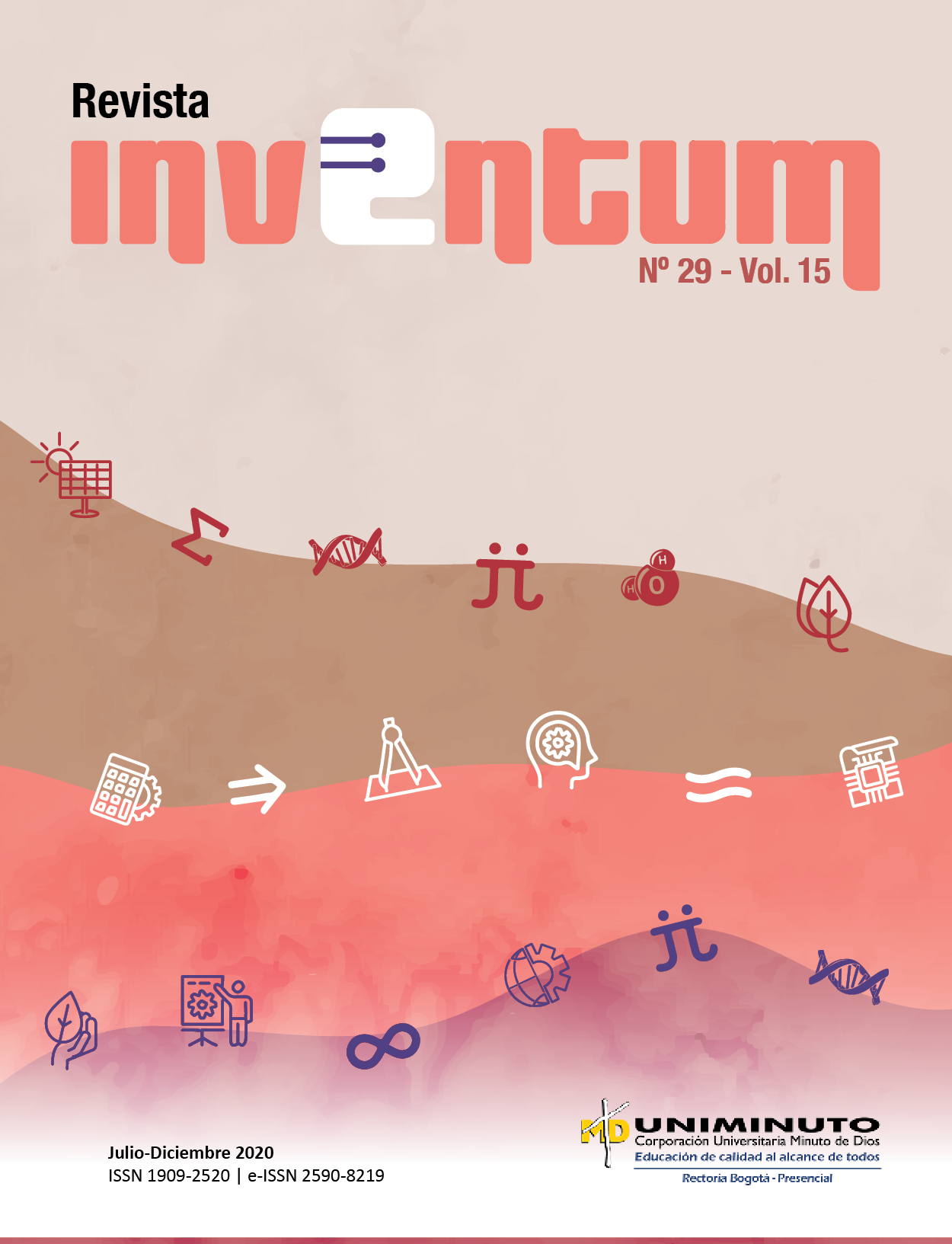Análisis del flujo de pacientes usando a simulação discreta em uma unidade de quimioterapia de uma organização sem lucro
Conteúdo do artigo principal
Resumo
A simulação discreta é uma ferramenta que permite uma visão geral do sistema e fácil rastreabilidade das variáveis de interesse. Neste artigo é feita uma representação de uma unidade de quimioterapia com o objetivo de melhorar o uso dos recursos disponíveis em um modelo de simulação discreto que representa o sistema determinado por suas variáveis-chave como: chegada dos pacientes, tempo de internação, pessoal necessário e operações associadas. Uma metodologia de segmentação de pacientes é proposta com base em tempos de infusão de acordo com protocolos. Posteriormente, vários cenários são propostos em dois experimentos, mantendo a demanda como parâmetro fundamental e modificando o recurso variável para atender o maior número possível de pacientes. Por fim, o estudo permitiu encontrar uma combinação adequada de recursos (combinação de enfermeiros oncológicos e auxiliares de enfermagem) para obter a redução desejada no tempo de internação.
Detalhes do artigo
Seção
Se solicita a los autores que diligencien el documento de cesión de derechos de autor sobre el artículo, para que sea posible su edición, publicación y distribución en cualquier medio y modalidad: medios electrónicos, CD ROM, impresos o cualquier otra forma, con fines exclusivamente científicos, educativos y culturales
- La obra pertenece a UNIMINUTO.
- Dada la naturaleza de UNIMINUTO como Institución de Educación Superior, con un modelo universitario innovador para ofrecer Educación de alta calidad, de fácil acceso, integral y flexible; para formar profesionales altamente competentes, éticamente responsables y líderes de procesos de transformación social, EL CEDENTE ha decidido ceder los derechos patrimoniales de su OBRA, que adelante se detalla para que sea explotado por ésta
- El querer de EL CEDENTE es ceder a título gratuito los derechos patrimoniales de la OBRA a UNIMINUTO con fines académicos.
Como Citar
Referências
[2] S. M. Thompson, R. Day, and R. Garfinkel, “Improving the flow of patients through healthcare organizations”, en Handbook of healthcare operations management, New York: Springer, 2013, pp. 183–204. doi: https://doi.org/10.1007/978-1-4614-5885-2
[3] M. Chong et al., “Patient flow evaluation with system dynamic model in an emergency department: Data analytics on daily hospital records”, en 2015 IEEE international congress on big data, New York, 2015, pp. 320–323.
doi: https://doi.org/10.1109/BigDataCongress.2015.54.
[4] S. Barnes, B. Golden, and S. Price, “Applications of agent-based modeling and simulation to healthcare operations
management”, en Handbook of healthcare operations management, New York: Springer, 2013, pp. 45–74, doi:https://doi.org/10.1007/978-1-4614-5885-2_3.
[5] T. Bountourelis, M. Y. Ulukus, J. P. Kharoufeh, and S. G. Nabors, “The modeling, analysis, and management of intensive care units”, en Handbook of healthcare operations management, New York: Springer, 2013, pp.
153–182. doi: https://doi.org/10.1007/978-1-4614-5885-2_6.
[6] C. D. Pegden and D. T. Sturrock, Rapid modeling solutions: introduction to simulation and Simio, Sewickley, Pennsylvania Simio Forward Thinking, 2014.
[7] W. D. Kelton, J. S. Smith, D. T. Sturrock, and A. Verbraeck, Simio & simulation: Modeling, analysis, applications, Sewickley, Pennsylvania Learning Solutions Chennai.
[8] K. Bertsch, Day-of-Discharge Planning at Acute Care Hospitals, thesis, Master of Science in Engineering, Wright State
University, Dayton (Ohio) 2014. [Online]. Available: https://corescholar.libraries.wright.edu/etd_all/1235.
[9] Case, and K. Ellis, “Simulation-Based Improvement of the Discharge System in Highly Utilized Hospitals”, en Winter
Simulation Conference, Maryland, 2019, Consultado: jul. 17, 2020. [Online]. Available: https://www.simio.com/resources/papers/WinterSim2019/Simulation-Based-Improvement-of-the-Discharge-System-in-Highly-Utilized-Hospitals.php.
[10] M. Khasawneh, “Reducing Patient Waiting Time in an Outpatient Clinic: A Discrete Event Simulation (DES) Based Approach”, Pittsburgh, Pennsylvania 2017, [Online]. Available: https://www.researchgate.net/profile/Niamat_Ullah_Ibne_Hossain/publication/317730692_Reducing_Patient_Wai
ting_Time_in_an_Outpatient_Clinic_A_Discrete_Event_Simulation_DES_Based_Approach/links/5975a806a6fdcc83488e
9320/Reducing-Patient<-Waiting-Time-inan-Outpatient-Clinic-A-Discrete-Event-Simulation-DES-Based-Approach.pdf
[11] S. Suss, N. Bhuiyan, K. Demirli, and G. Batist, “Toward Implementing Patient Flow in a Cancer Treatment Center to Reduce Patient Waiting Time and Improve Efficiency”, JOP, vol. 13, n.° 6, pp. e530-e537, may 2017, doi:10.1200/JOP.2016.020008.
[12] C. Forero-Almanza, M. A. Martínez, y M. Mauricio Herrera, “Modelo de simulación relacionado con la
https://www.simio.com/resources/papers/WinterSim2016/Eradicating-the-Average-Answering-Complex-Healthcare-Questions-Using-Discrete-Event-Simulation.php.
[14] C. M. DeRienzo, R. J. Shaw, P. Meanor, E. Lada, J. Ferranti, and D. Tanaka, “A discrete event simulation tool to support and predict hospital and clinic staffing”, Health Informatics J, vol. 23, n.° 2, pp. 124-133, jun. 2017, doi: 10.1177/1460458216628314.
[15] Bernatchou, Maryam, Adil Bellabdaoui, and Fatima Ouzayd. 2017. “Performance Evaluation of a Chemotherapy Treatment Unit through Simulation.” In Proceedings of the International Conference on Industrial Engineering and Operations Management, Rabat, Moroco, 2017, pp. 5720–5726. [Online] Available: http://ieomsociety.org/ieom2017/papers/582.pdf
[16] T. M. Abuhay, A. V. Krikunov, E. V. Bolgova, L. G. Ratova, and S. V. Kovalchuk, “Simulation of Patient Flow and Load of Departments in a Specialized Medical Center”, Procedia Computer Science, vol. 101, pp. 143-151,
ene. 2016, doi: 10.1016/j.procs.2016.11.018
[17] L. M. Pantoja Rojas, y L. A. Garavito Herrera, “Análisis del proceso de urgencias y hospitalización del CAMI Diana Turbay a través de un modelo de simulación con Arena 10.0 para la distribución óptima del recurso
humano”, Ingeniería e Investigación, vol. 28, n.° 1, pp. 146-153, abr. 2008. [En línea]. Disponible en: http://www.scielo.org.co/scielo.php?script=sci_arttext&pid=S0120-5 6 0 9 2 0 0 8 0 0 0 1 0 0 0 1 6 & l n g = e n &nrm=iso
[18] M. Alvarado, T. G Cotton, N. Lewis, E. Perez, y W. Carpentier, “Modeling and simulation of oncology clinic operations in discrete event system specification”, vol. 94, n°. 2, pp. 105-121, may 31, 2017. [En línea]. Disponible
en: https://journals.sagepub.com/doi/full/10.1177/0037549717708246, doi: https://doi.org/10.1177/0037549717708246
[19] G. Lamé, O. Jouini, and J. S.-L. Cardinal, “Combining Soft Systems Methodology, ethnographic observation, and discreteevent simulation: A case study in cancer care”, Journal of the Operational Research Society, pp. 1-18, jun. 2019, doi: 10.1080/01605682.2019.1610339.





